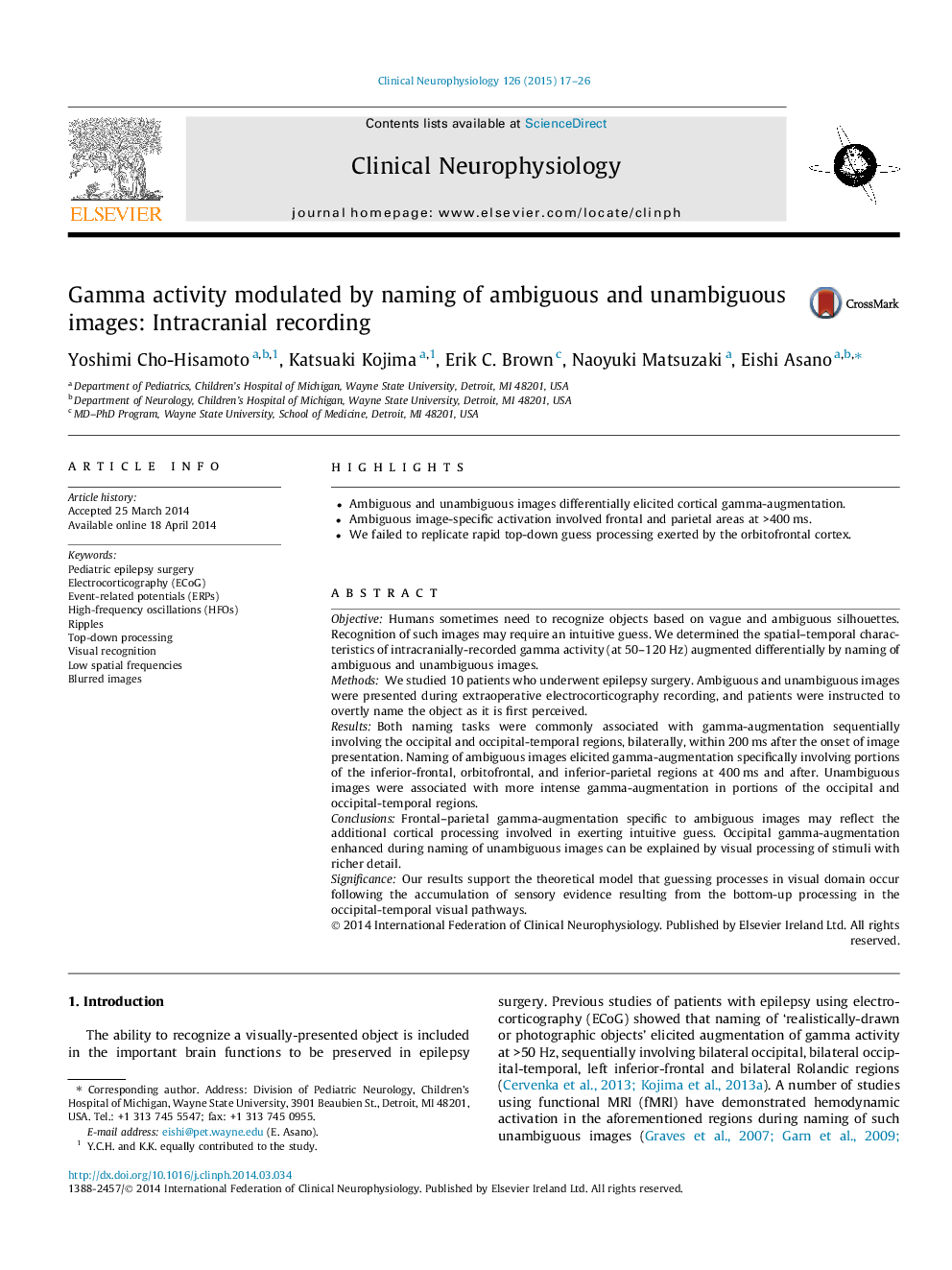| کد مقاله | کد نشریه | سال انتشار | مقاله انگلیسی | نسخه تمام متن |
|---|---|---|---|---|
| 3043207 | 1184974 | 2015 | 10 صفحه PDF | دانلود رایگان |
• Ambiguous and unambiguous images differentially elicited cortical gamma-augmentation.
• Ambiguous image-specific activation involved frontal and parietal areas at >400 ms.
• We failed to replicate rapid top-down guess processing exerted by the orbitofrontal cortex.
ObjectiveHumans sometimes need to recognize objects based on vague and ambiguous silhouettes. Recognition of such images may require an intuitive guess. We determined the spatial–temporal characteristics of intracranially-recorded gamma activity (at 50–120 Hz) augmented differentially by naming of ambiguous and unambiguous images.MethodsWe studied 10 patients who underwent epilepsy surgery. Ambiguous and unambiguous images were presented during extraoperative electrocorticography recording, and patients were instructed to overtly name the object as it is first perceived.ResultsBoth naming tasks were commonly associated with gamma-augmentation sequentially involving the occipital and occipital-temporal regions, bilaterally, within 200 ms after the onset of image presentation. Naming of ambiguous images elicited gamma-augmentation specifically involving portions of the inferior-frontal, orbitofrontal, and inferior-parietal regions at 400 ms and after. Unambiguous images were associated with more intense gamma-augmentation in portions of the occipital and occipital-temporal regions.ConclusionsFrontal–parietal gamma-augmentation specific to ambiguous images may reflect the additional cortical processing involved in exerting intuitive guess. Occipital gamma-augmentation enhanced during naming of unambiguous images can be explained by visual processing of stimuli with richer detail.SignificanceOur results support the theoretical model that guessing processes in visual domain occur following the accumulation of sensory evidence resulting from the bottom-up processing in the occipital-temporal visual pathways.
Journal: Clinical Neurophysiology - Volume 126, Issue 1, January 2015, Pages 17–26
